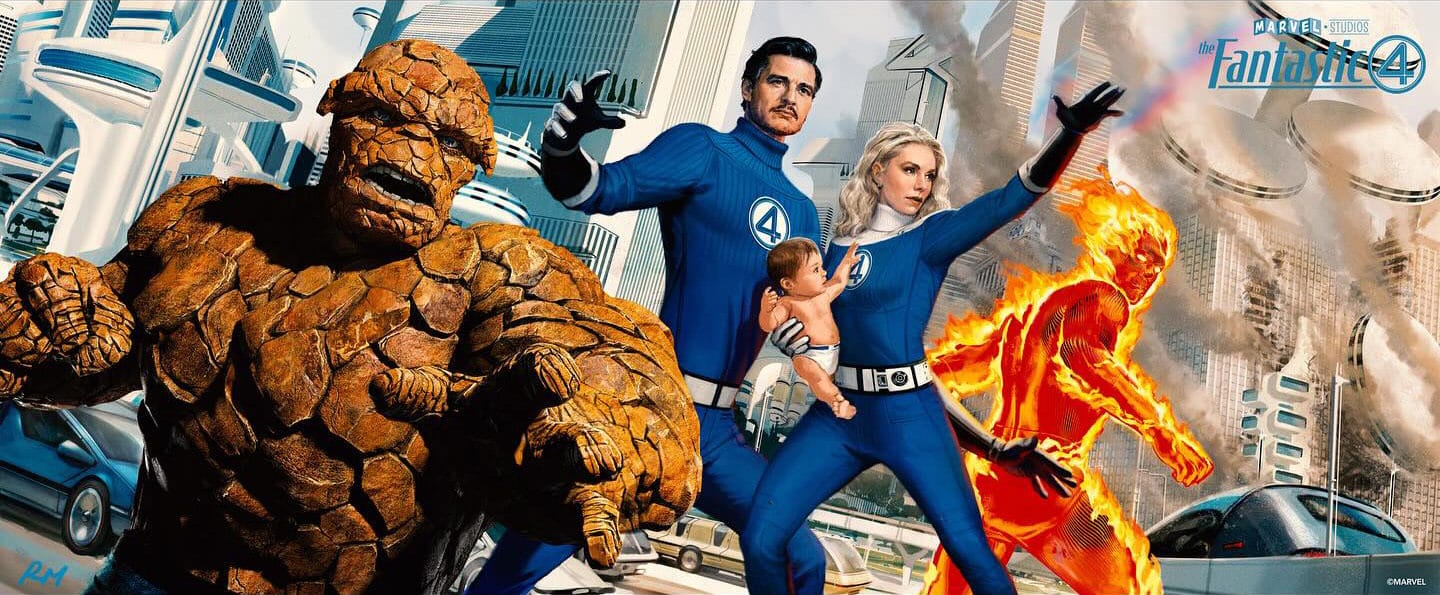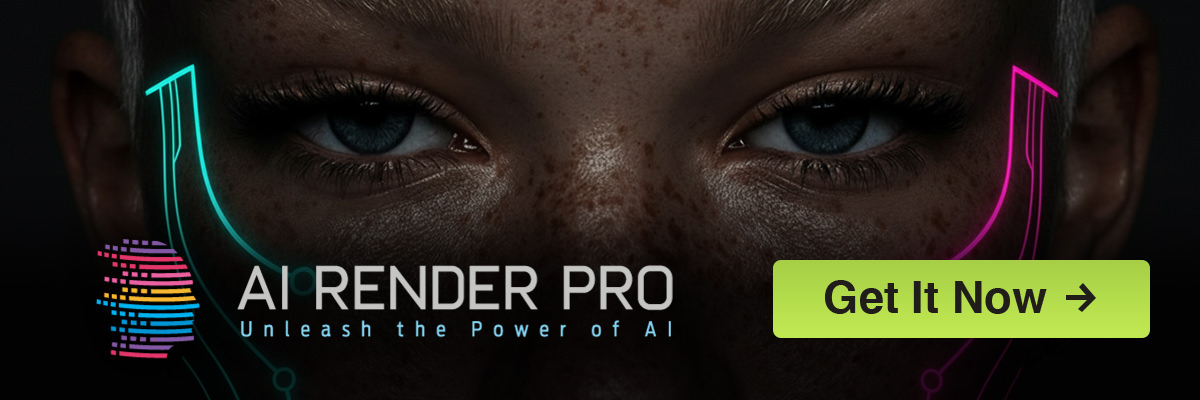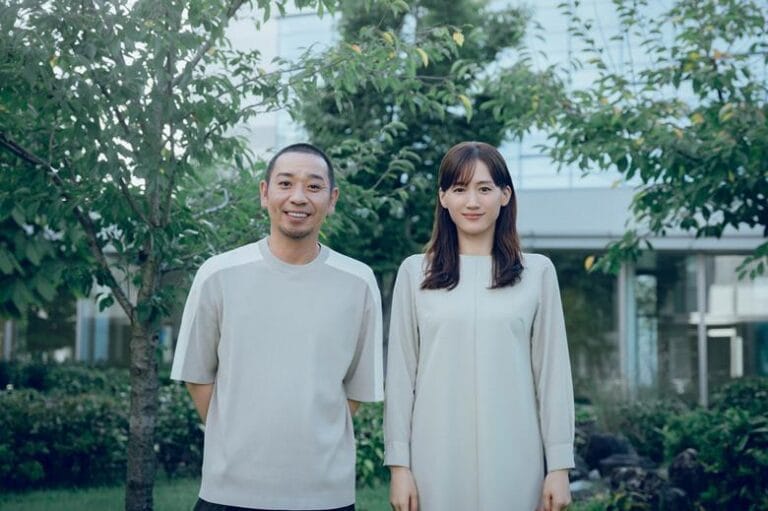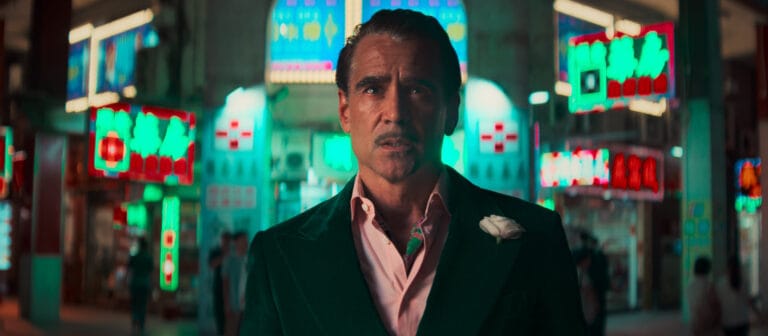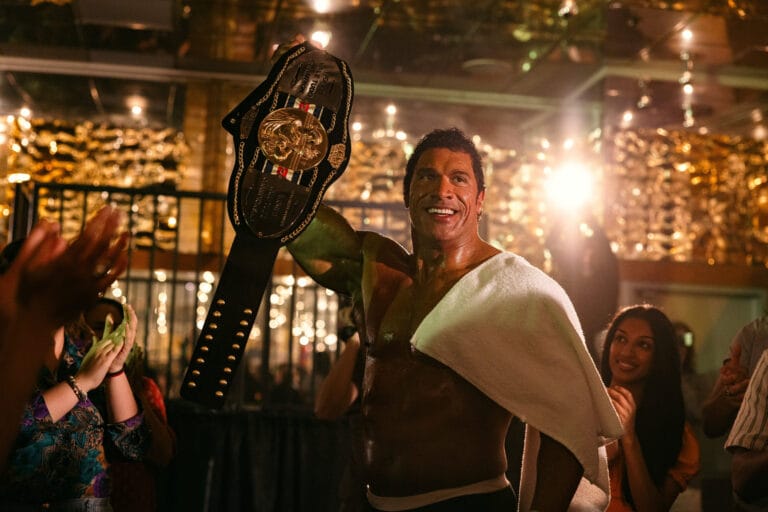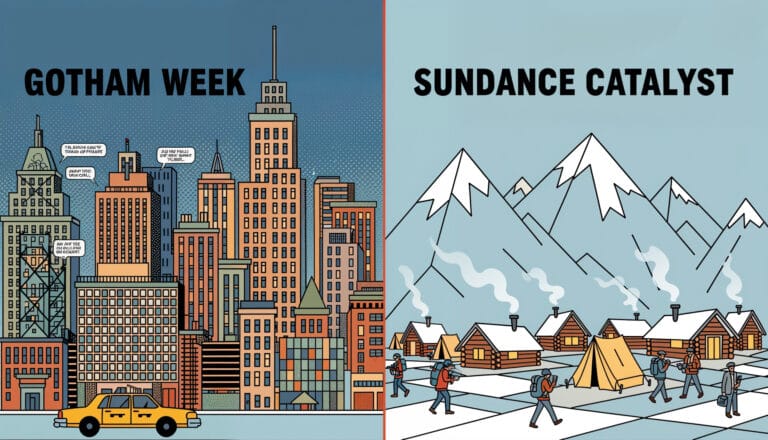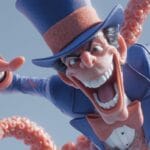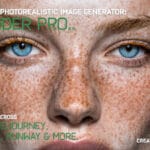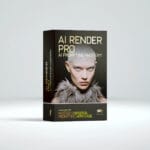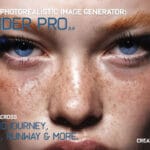Key Takeaways:
- Digital Characters are About More Than Models: The creation of characters like The Thing relies on a deep understanding of weight, texture, and performance capture to sell emotion and physical presence.
- Invisible Effects Require Visible Artistry: Visualizing powers like invisibility and force fields is a masterclass in subtlety, using light refraction, particle systems, and environmental interaction to make the unseen feel real.
- Integration is Everything: The true magic of VFX lies in the seamless compositing of digital elements with live-action footage, where matching light, shadow, and color is paramount for believability.
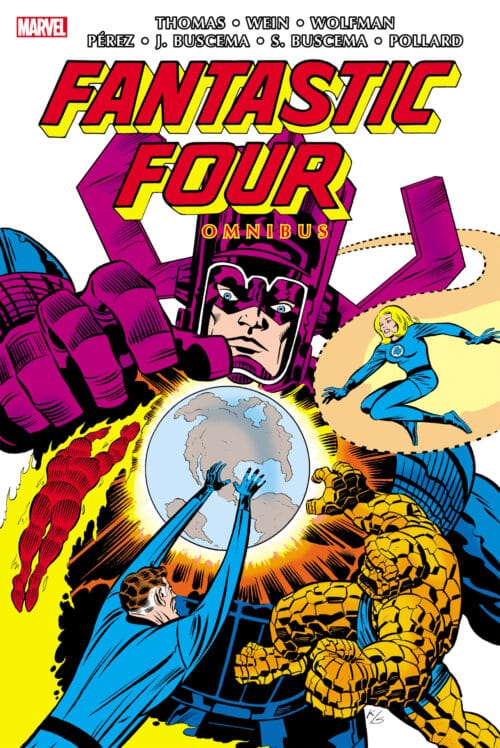
A Personal Journey into Kirby’s Universe
I must have been around ten years old, somewhere in the sun-drenched hills of Hyères in the South of France, when my life’s creative trajectory was irrevocably altered. A family friend—a passionate book collector with an encyclopedic knowledge of illustrated narratives—pulled out a stack of what I would later understand to be treasures: first editions of The Fantastic Four by Jack Kirby. The covers alone were electric. The Thing’s craggy, geological form. The Human Torch blazing across impossible perspectives. The enigmatic, cosmic scope of it all. But it was Kirby’s signature design language—those wild, dynamic energy fields known as “Kirby Krackle,” the impossible anatomy that somehow felt right, the sheer kinetic force radiating from every panel—that utterly fascinated me.
In those pages, I discovered something beyond simple superhero stories. I found a visual philosophy. Kirby’s work wasn’t just about drawing characters; it was about capturing raw, unfiltered energy and emotion through line, composition, and an almost architectural understanding of visual power. That afternoon in Hyères didn’t just introduce me to comics—it fundamentally changed my style as a designer, as a future comics illustrator, and eventually as a director. Kirby taught me that the how you show something is as important as what you’re showing, a lesson that has guided every creative decision I’ve made since.
This is why, for me, the success of any Fantastic Four adaptation is inextricably connected to whether it captures the essence of those comics—that unique, visionary vision that Jack Kirby burned into the medium. It’s not just about spectacle; it’s about honoring a visual language that defined what superhero storytelling could be. When I watch the Fantastic Four VFX, I’m not just analyzing technical execution. I’m looking for echoes of that same creative fire, that same commitment to making the impossible feel not just real, but essential.
The silver screen has always been a canvas for the impossible, a place where superheroes soar and cosmic energies collide. With the release of The Fantastic Four: First Steps, audiences are once again being invited into the world of Marvel’s first family. But behind every invisible force field and every rock-solid punch lies a symphony of digital artistry, meticulously crafted by some of the most talented minds in the industry. Thanks to new reels from powerhouse studios like Digital Domain and RISE FX, we can pull back the curtain and explore the techniques that bring this world to life. This isn’t just a showcase of technical prowess; it’s a treasure trove of lessons for every filmmaker and creator looking to elevate their own visual storytelling—and, perhaps most importantly, it’s a test of whether modern VFX can capture the raw, visionary energy that Kirby infused into every panel.
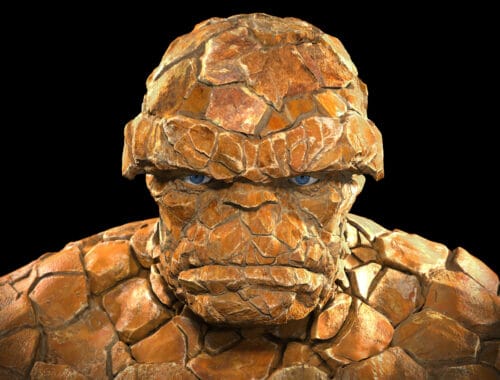
The Art of Digital Characters: Bringing The Thing to Life
Creating a believable, fully digital character that shares the screen with human actors is one of the highest mountains to climb in visual effects. For a character like Ben Grimm, The Thing, the challenge is even more profound because he embodies something Kirby understood instinctively: mass with emotion, geology with soul. The Thing isn’t just a rock monster—he’s a tragedy wrapped in orange stone, and every crack in his hide needs to convey both immense physical power and deep vulnerability. The process begins long before a single pixel is rendered, rooted in character design that must serve both the story and the technical pipeline. Artists must solve the physics of how a being made of rock would move, how his “skin” would crack and shift without crumbling, and how light would interact with its unique, craggy surface to make him feel truly present in the scene.
World-renowned studios like Digital Domain, known for their groundbreaking work on characters like Thanos, are masters of this craft. Their approach involves building a digital puppet of immense complexity, with an underlying “musculature” that dictates how the outer rock plates shift and slide over one another. This technical solution actually mirrors something Kirby did intuitively in his drawings—he understood that The Thing wasn’t a static statue, but a being whose very form suggested movement and strain. The VFX teams combine this structural approach with sophisticated texturing and shading, where every crevice is painted to react to light authentically. Performance capture often provides the foundation, allowing an actor’s nuanced facial expressions and body language to drive the animation, ensuring that the soul of the character shines through the stony exterior. This fusion of performance and technology is what transforms a digital model into a living, breathing character audiences can connect with. A detailed Fantastic Four VFX breakdown reveals that it’s this attention to the performance—the human element beneath the superhuman exterior—that truly sells the effect.
What strikes me most about modern VFX approaches to The Thing is how they’re essentially solving the same visual problem Kirby solved on the page: how do you make something monumental feel intimate? Kirby’s Thing always had these beautifully expressive eyes peeking out from all that rock, these poses that conveyed both power and pathos. The digital artists are doing the same work, just with different tools. They’re honoring that legacy while pushing it into three-dimensional space.
For independent creators, the lesson here is that character believability is rooted in performance and design philosophy, not just technical complexity. While you may not have a render farm at your disposal, you can leverage AI tools for the crucial initial stages. Use generative art platforms to rapidly iterate on character concepts, exploring silhouettes, textures, and emotional ranges that would take days to sketch by hand. Think about what makes your character feel right, not just look right. Our guide on 10 Powerful Midjourney Prompts for Character Design can provide a powerful starting point for bringing your own unique beings to life, focusing your energy on the design and story before diving into complex 3D modeling. The key is to ask yourself what Kirby would have asked: what does this character’s form tell us about their soul?
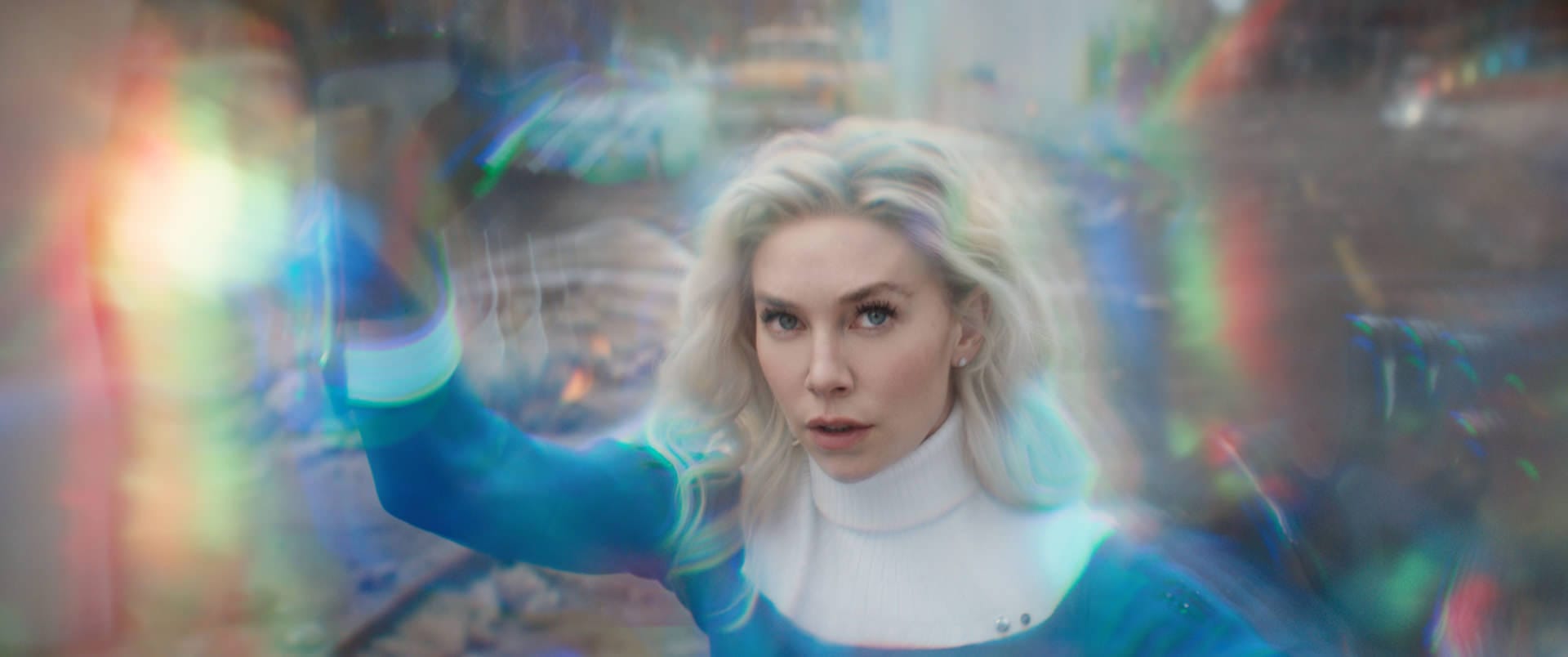
Mastering Invisible Forces: Visualizing Sue Storm’s Powers
How do you make invisibility visible? This paradoxical challenge is at the heart of visualizing Sue Storm’s powers, and it’s one of the most fascinating translation problems from comics to screen. In Kirby’s hands, Sue’s invisibility and force fields had a distinctive visual signature—those iconic dotted lines, the geometric perfection of her shields, the way he suggested transparency through careful inking techniques. On the page, Kirby could use the language of illustration to show us what invisibility “felt” like. On screen, the challenge is different: you need to depict a character who isn’t there, or show a protective field that is by nature transparent, all while maintaining the spirit of Kirby’s original concept. If done poorly, the effect is either unnoticeable or looks like a cheap video filter. The key is to show the effect of the power on the surrounding environment—exactly what Kirby did with his line work.
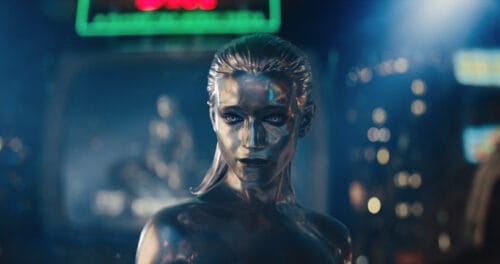
This involves complex simulations of light refraction and distortion, where the world seen through the invisible character or force field is bent and warped in a physically plausible way. It’s a subtle art, relying on visual cues that tell the audience’s brains that something is there, even when they can’t see it directly. Studios like RISE FX tackle this by employing advanced particle systems and fluid dynamics. Imagine Sue Storm’s force field shimmering to life; this is achieved by simulating millions of tiny, semi-transparent particles that catch the light, tracing the field’s form for a split second. It’s the digital equivalent of Kirby’s energy dots, but with the added dimension of time and movement. When she turns invisible, compositors will meticulously bend the background plate around her silhouette, adding chromatic aberration and slight blurs to the edges to simulate light bending around her form. Raindrops splashing against an unseen shape or dust swirling to reveal a hidden outline are other classic techniques that ground the supernatural power in tangible reality, making the impossible seem plausible.
What I find beautiful about this approach is that it respects the core of Kirby’s design philosophy: energy made visible. His force fields weren’t just barriers—they were geometric expressions of pure willpower, perfect circles and hexagons that represented Sue’s mental discipline. When I see modern VFX artists creating these shimmering, tessellated energy shields, I recognize them as spiritual descendants of those perfect Kirby circles. They’re translating his visual vocabulary into a new medium, and when it works, it’s breathtaking.
This principle of “showing the effect, not the source” is a powerful tool for filmmakers at any level. You don’t need a Hollywood budget to create compelling invisible effects. In software like Adobe After Effects, you can use the “Displacement Map” effect combined with animated noise patterns to create believable heat haze or light refraction. For a force field, try layering stock footage of energy or atmospheric phenomena with low opacity and using distortion tools to create a bubble-like effect. The trick is to focus on how this energy interacts with the real world—a flickering light, a gust of wind, or a ripple in a puddle—to sell the presence of an unseen force. Think like Kirby: how would this power express itself visually? What makes it feel powerful rather than just look fancy?
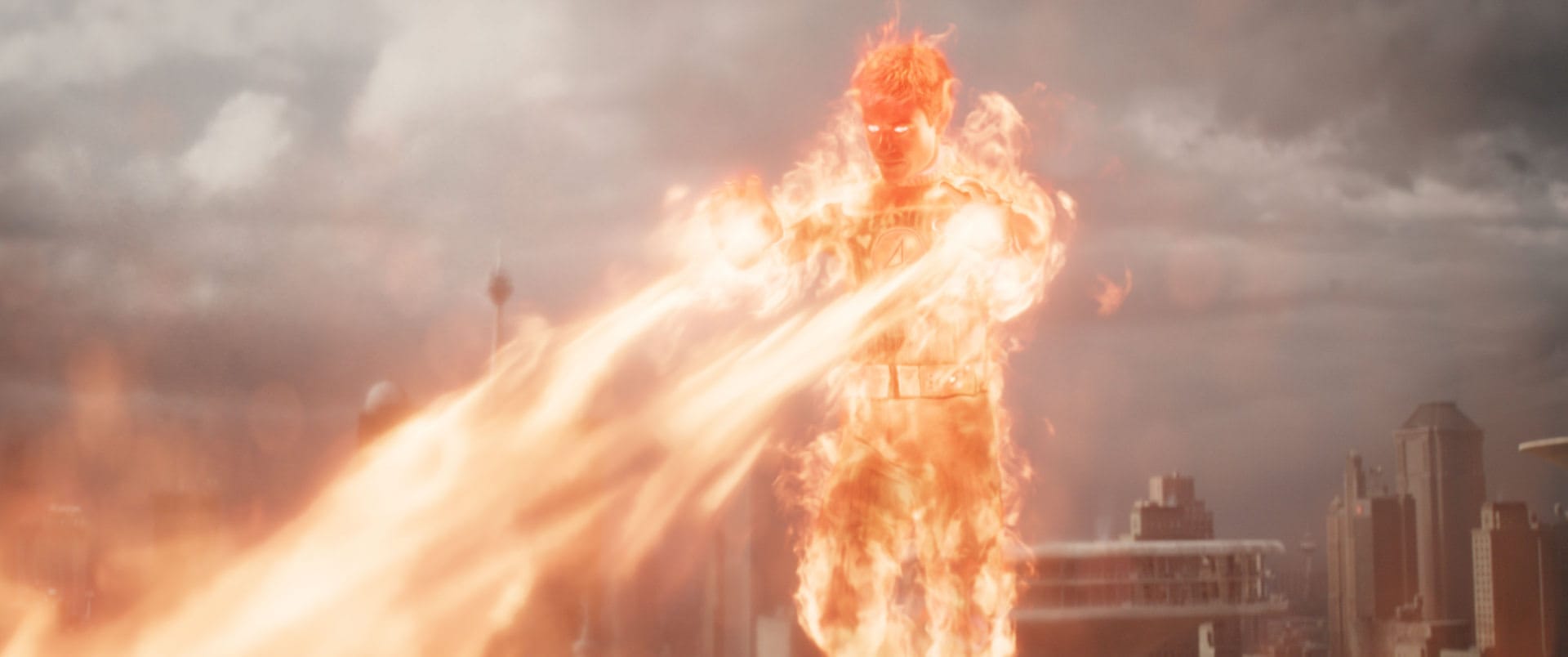
From Human to Torch: The Challenge of Photorealistic Fire
CGI fire has long been a benchmark for excellence in visual effects, and for good reason. It’s an element that is chaotic, organic, and inherently difficult to simulate convincingly. For a character like the Human Torch, the fire isn’t just an effect—it is the character. This is perhaps the most direct challenge when adapting Kirby’s work: his flames were stylized, expressive, almost calligraphic. They had personality. They weren’t just hot air—they were visual exclamation points, punctuation marks of pure energy that followed the flow of action across the page.
In three-dimensional space, fire needs to emit light, cast dynamic shadows on the environment, and interact with elements like wind and water, all while wrapping around a moving human form without looking like a simple texture pasted onto a 3D model. This requires a deep understanding of fluid dynamics and volumetric rendering, creating a simulation that has depth, texture, and unpredictable, life-like motion. But it also requires something more subtle: it needs to have character. Kirby’s flames weren’t scientifically accurate—they were emotionally accurate. They expressed Johnny Storm’s personality, his cockiness, his explosive energy. An official Fantastic Four VFX breakdown is always a masterclass in elemental simulation, but the truly great ones understand that technical accuracy must serve character expression.
The creation of these effects is the domain of powerful simulation software like Houdini. Artists create complex rule sets that govern the fire’s behavior: its temperature, fuel source (in this case, Johnny Storm’s body), and how it reacts to velocity and external forces. Multiple layers of simulation are then composited together—a core of bright, intense flame, an outer layer of licking fire tongues, and trails of heat haze and smoke. A crucial step is the lighting integration, where the simulated fire becomes the primary light source in the scene, realistically illuminating buildings, streets, and other characters. This is what truly sells the effect and makes the character feel part of the world. When you see the Human Torch fly past a window and watch the orange glow wash across someone’s face inside, you’re seeing the digital artists doing what Kirby did with reflected light in his inking—making the energy feel real by showing its impact on the environment.
While creating a full digital human on fire is beyond the scope of most indie projects, the tools for creating realistic fire are becoming more accessible. The key takeaway is to focus on interaction and light. Even if you are using pre-made fire assets or stock footage, the most important step is to make it light the scene. Manually add orange and yellow glows to surfaces near the fire, animate flickering shadows, and add heat distortion to the air around it. Think about what the fire is doing to the world around it, not just what it looks like in isolation. Furthermore, the rapid advancements in generative video mean that tools for pre-visualizing such effects are more powerful than ever. Exploring the capabilities of models discussed in our article on Veo & Flow for Cinematic Realism can help you conceptualize and plan these complex shots before committing to time-intensive post-production.
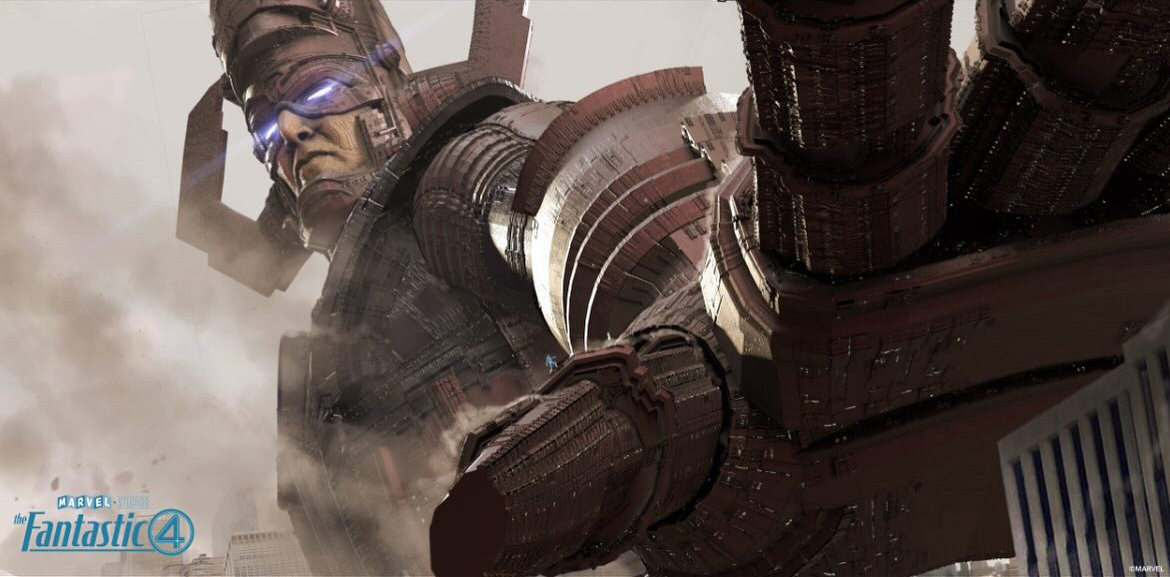
Honoring Kirby’s Vision in the Digital Age
There’s a question that haunts every Fantastic Four adaptation, and it’s one that goes beyond technical execution: can modern VFX capture the essence of what made Kirby’s work so revolutionary? His art wasn’t about realism—it was about a heightened reality where energy crackled at the edges of every form, where cosmic forces were made tangible through sheer force of imagination. The challenge for today’s VFX artists isn’t just to make The Thing look like he’s made of rock, or to simulate convincing fire for Johnny Storm. It’s to translate Kirby’s visual language—his dynamic compositions, his architectural sense of scale, his way of making the abstract concrete—into cinematic terms.
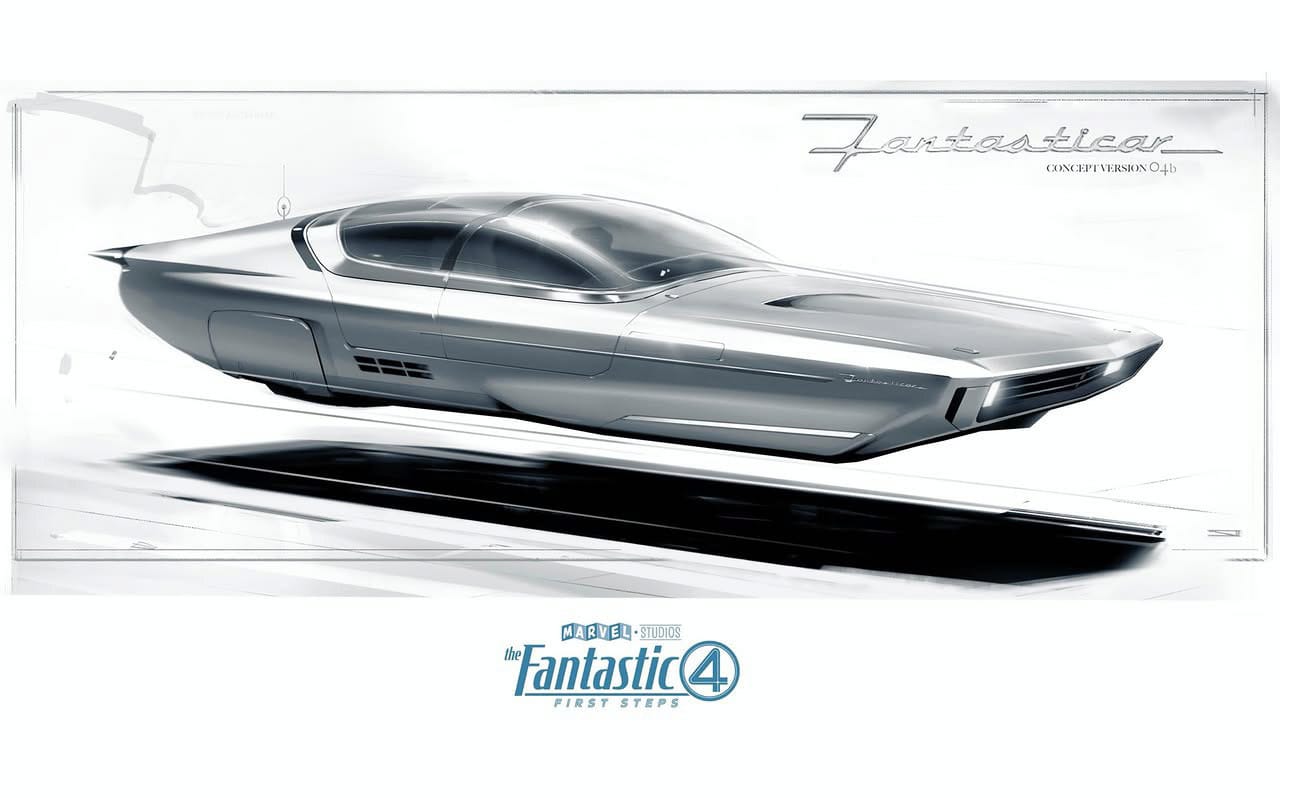
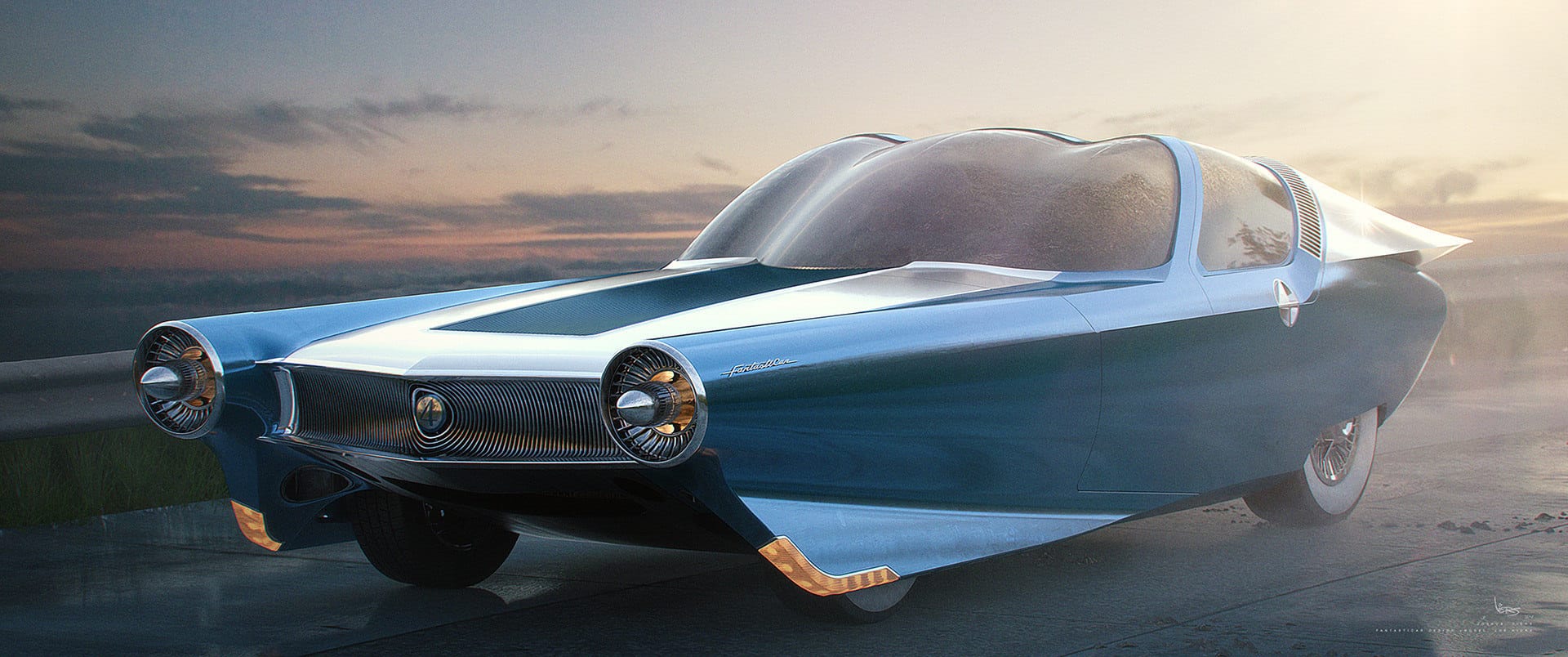
What gives me hope when I watch these VFX breakdowns is when I see artists making choices that echo Kirby’s design philosophy. When I see The Thing’s rock plates shifting with sculptural precision, or Sue’s force fields forming geometric patterns of pure energy, or Johnny’s flames trailing behind him in ways that prioritize visual drama over strict physical accuracy, I recognize the spirit of those comics I discovered in Hyères. The tools have evolved from ink and paper to particle systems and render farms, but the fundamental creative challenge remains the same: how do you make the impossible not just believable, but exciting? How do you create images that burn themselves into viewers’ memories the way Kirby’s panels burned themselves into mine?
The most successful superhero VFX aren’t the ones that achieve perfect photorealism—they’re the ones that achieve perfect emotional realism. They make you believe not just in the physics of their world, but in its mythology. That’s what Kirby understood, and that’s what the best modern VFX artists understand too. They’re not just technicians; they’re storytellers using digital tools to continue a visual conversation that Kirby started more than sixty years ago.
AI’s Growing Role in the VFX Pipeline
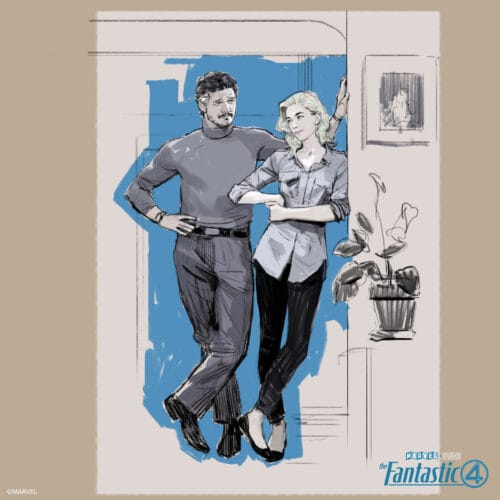
While the stunning visuals in the reels from Digital Domain and RISE FX showcase decades of refined artistry in traditional VFX, an invisible revolution is happening in the background: the integration of artificial intelligence. AI is no longer just a buzzword; it’s becoming a fundamental tool that optimizes and accelerates the creative process. It’s not about a single “create shot” button, but rather a suite of intelligent assistants that handle the laborious, time-consuming tasks, freeing up artists to focus on what they do best: creating breathtaking images and honoring the creative vision that drives the project. This quiet integration is arguably as important as the final render itself.
In a modern studio pipeline, AI-powered tools are used for tasks that once required hundreds of man-hours. Rotoscoping, the painstaking process of tracing objects frame-by-frame to isolate them from the background, can now be accomplished with startling accuracy using machine learning models. AI also excels at camera tracking, motion capture cleanup, and even generating realistic environmental textures. For pre-production, AI is a game-changer. Concept artists and directors use tools like our own AI Render Pro to generate dozens of photorealistic environments, character designs, and key-frame storyboards in a matter of hours, allowing for a much more dynamic and visually rich development phase.
The most exciting aspect of this shift is the democratization of high-end visual effects. For independent filmmakers—especially those of us who grew up marveling at what artists like Kirby could achieve with just pencils and ink—this is a golden age. What was once the exclusive domain of multi-million dollar studios is now accessible from a laptop. By building a smart workflow, you can punch far above your budget. The practical tip is to think of AI as your own small-scale VFX department. Use it to handle the grunt work, like background removal and object tracking, and to supercharge your creative ideation with concept art and pre-visualization.
Imagine being able to rapidly prototype different visual approaches to your own superhero character—testing textures, lighting scenarios, and dynamic poses the way you might sketch thumbnails in a sketchbook. A deep understanding of modern Filmmaking AI Workflows isn’t just an advantage anymore; it’s becoming an essential part of the independent filmmaker’s toolkit. This modern Fantastic Four VFX breakdown is a testament to what’s possible when human artistry is amplified by intelligent technology. It’s the digital equivalent of what Kirby did when he took the conventions of comics and exploded them into something revolutionary.
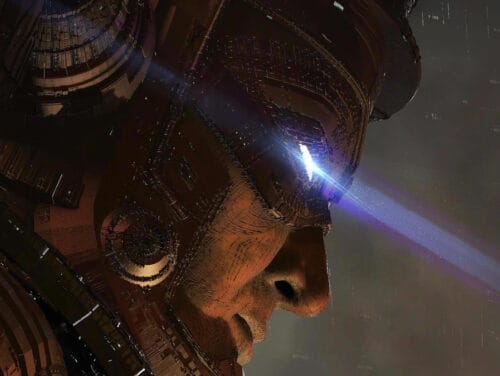
Internal Links for Further Learning
- 10 Powerful Midjourney Prompts for Character Design
- Veo & Flow for Cinematic Realism
- Filmmaking AI Workflows
- AI Render Pro
Conclusion
Deconstructing a major Hollywood production like The Fantastic Four: First Steps does more than just satisfy our curiosity; it provides a roadmap of possibilities and a connection to the creative legacy that inspired it. It shows us that every spectacular effect is built on a foundation of core artistic principles: understanding light, motion, performance, and composition—the same principles Jack Kirby mastered on the page. The techniques used by studios like Digital Domain and RISE FX, once impossibly out of reach, are now inspiring a new generation of tools that are more accessible than ever.
For me, watching these breakdowns is a full-circle moment. That ten-year-old kid in Hyères, transfixed by Kirby’s cosmic visions, could never have imagined the tools we have today. But he would have understood the fundamental goal: to create images that make people feel something, that make the impossible seem not just real but necessary. The line between blockbuster and independent is blurring, and the power to create the impossible is in your hands. To begin your journey into crafting stunning, professional-grade visuals that honor the great visual storytellers who came before, explore our AI Render Pro tool and start bringing your most ambitious ideas to life today.
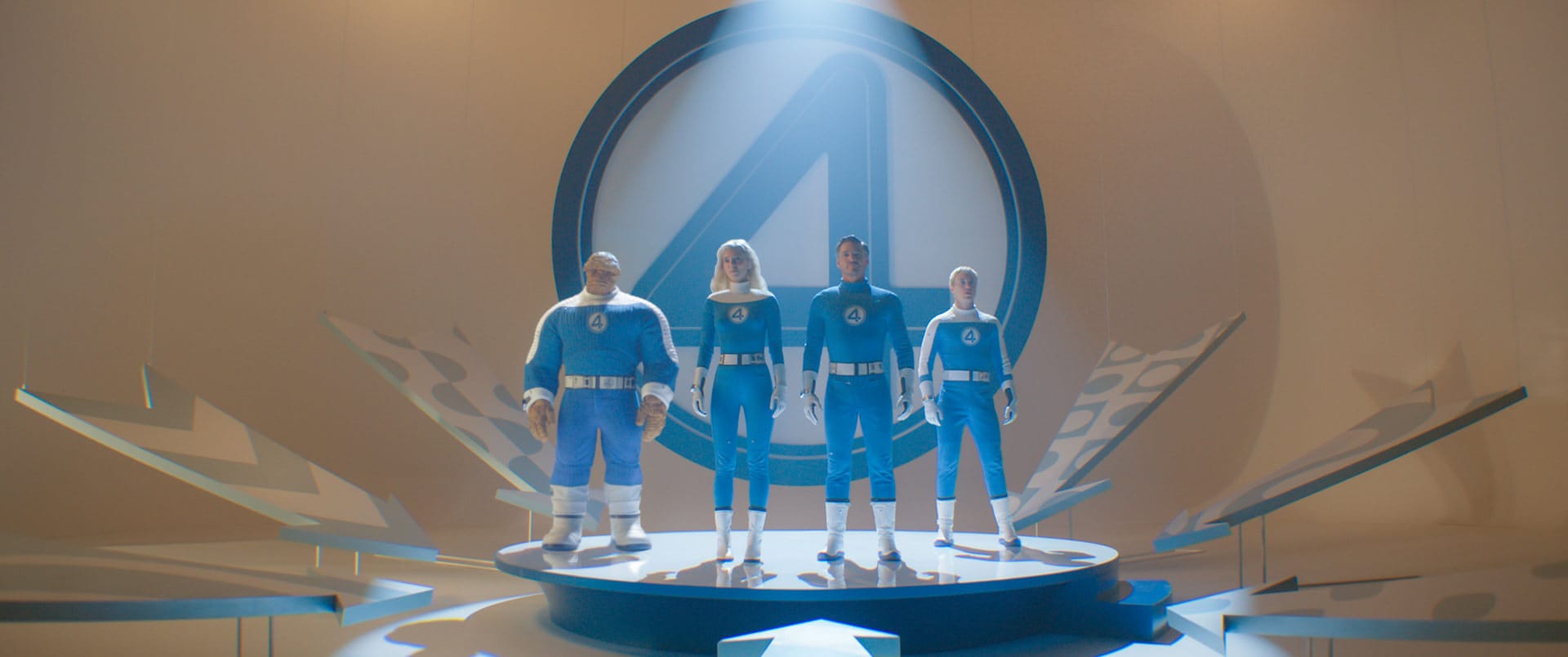
FAQ
What studios worked on the VFX for ‘The Fantastic Four: First Steps’?
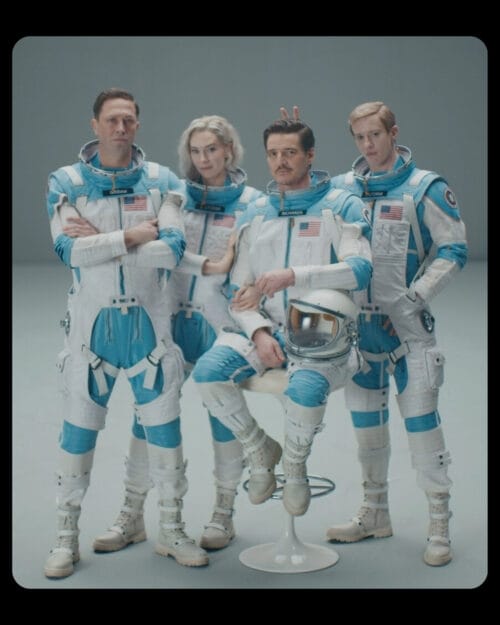
The publicly released VFX breakdowns feature work from industry-leading studios Digital Domain and RISE FX, both known for their extensive contributions to the Marvel Cinematic Universe and other major blockbusters. These studios are renowned for their ability to blend technical precision with artistic vision.
How can indie filmmakers learn from a major Hollywood VFX breakdown?
Indie filmmakers can learn by focusing on the underlying principles, not just the technology. Pay attention to how these studios use light to integrate CGI, how they convey weight and emotion in digital characters, and how they use environmental interactions to sell an effect. These concepts can be applied with more accessible tools like After Effects, Blender, and AI-powered software. Most importantly, study the creative philosophy behind the choices, not just the technical execution.
What made Jack Kirby’s Fantastic Four designs so influential for VFX?
Jack Kirby’s designs were revolutionary because they emphasized dynamic energy, geometric precision, and emotional expression over realistic anatomy. His visual language—from the “Kirby Krackle” energy effects to The Thing’s sculptural form—created a template for how superhuman powers should feel on screen. Modern VFX artists draw on these same principles when translating his work into three-dimensional, moving images.
Will AI replace traditional VFX artists?
It’s highly unlikely that AI will replace artists. Instead, it is becoming a powerful assistant that automates repetitive and technical tasks like rotoscoping, tracking, and cleanup. This allows artists to focus more of their time on the creative aspects of their work, such as lighting, animation, and final composition—the artistic decisions that give VFX soul and meaning. Ultimately, AI enhances creativity rather than replacing it.
Disclaimer: This article is an independent editorial. It is not affiliated with, endorsed, or sponsored by Marvel Studios, Disney, or any other rights holders of Fantastic Four: First Step. All trademarks, images, and video clips remain the property of their respective owners. For press inquiries, contact press@designhero.tv
Discover more from Olivier Hero Dressen Blog: Filmmaking & Creative Tech
Subscribe to get the latest posts sent to your email.

